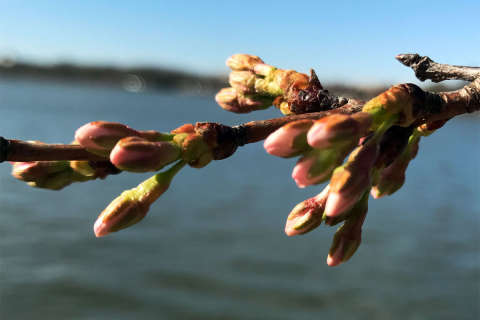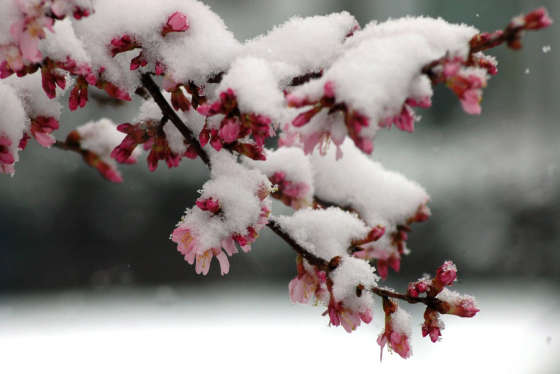WASHINGTON — A large nor’easter arrives this week, bringing heavy late-season snow to the listening area. The impact will last for days after the storm is over.
A system associated with the northern branch of the jet stream winds aloft will be transferring its energy to form a new low pressure system off the East Coast in a classic fashion, resulting in a large storm. It will bring heavy rain to the Southeast and heavy, wet snow to the D.C. area, all the way up through Pennsylvania and into New England. Some areas will end up with double digit accumulations, but others will have the apparent accumulations knocked down by sleet and rain.
- Latest forecast from WTOP and Storm Team4
- Photos: Look back at DC’s biggest March snowstorms
- DC area braces for March snow with mad dash to grocery store
- What will the cold weather mean for Cherry Blossoms?
A very “sticky” snow on the trees and power lines could lead to power outages as strong winds pick up. However, an indirectly positive impact of this storm — aside from snow for snow lovers — will be how much moisture this snow will contain. Since most surrounding areas are in “severe drought” status right now (some even recently dealing with brush fires), all this moisture will help mitigate the drought.
As the storm develops off the southeast coast on Monday, rain will move up from the Carolinas. But by the time the moisture gets to D.C., it will be nightfall with cold, dry air in place. That ensures it starting as snow in the D.C. area with heavy snowfall rates picking up as the storm energizes Monday night. Travel overnight Monday will be especially hazardous, and we will be picking up most of our snowfall totals during that time frame and into midmorning Tuesday. That’s when the winds will really become a factor, as the storm deepens even more heading for New England.
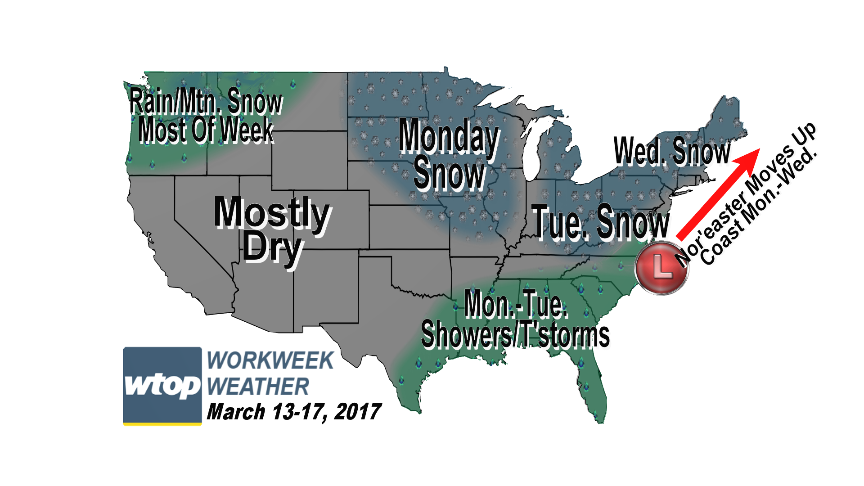
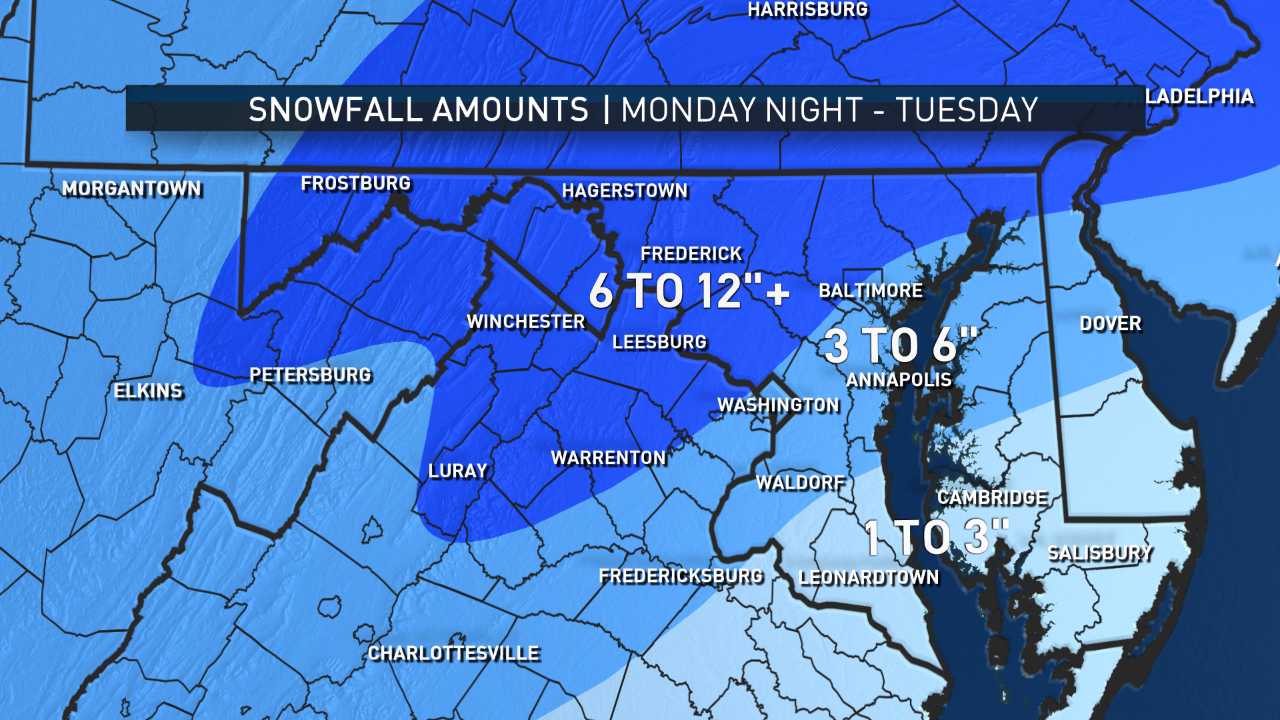
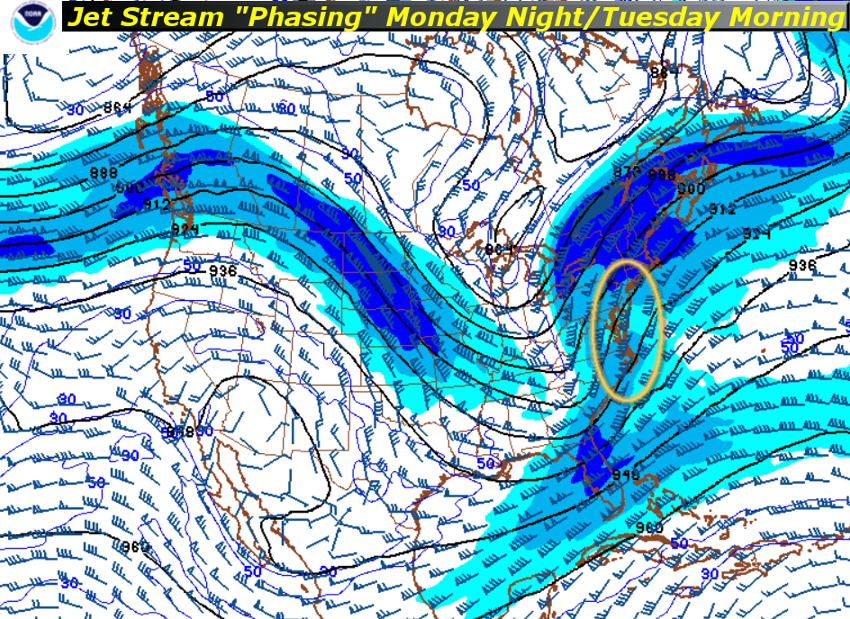
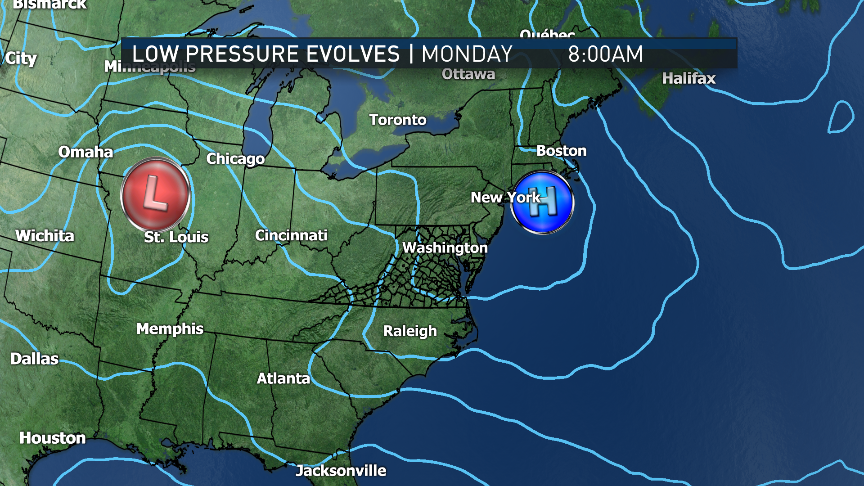
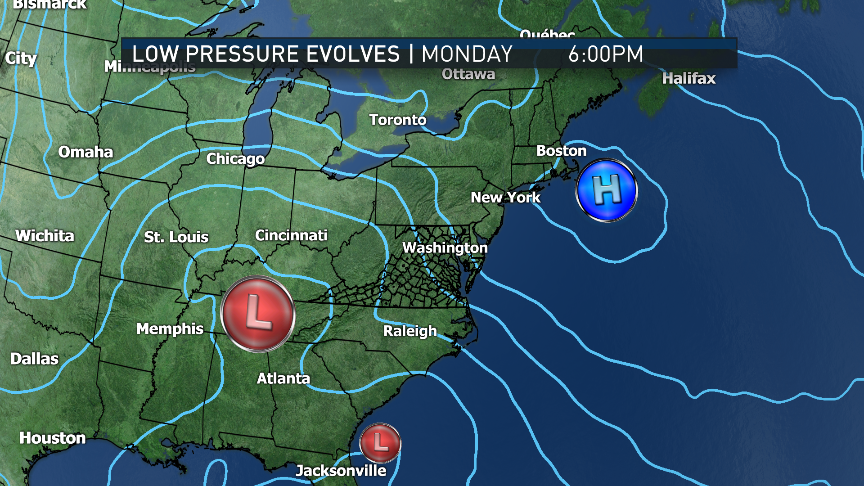
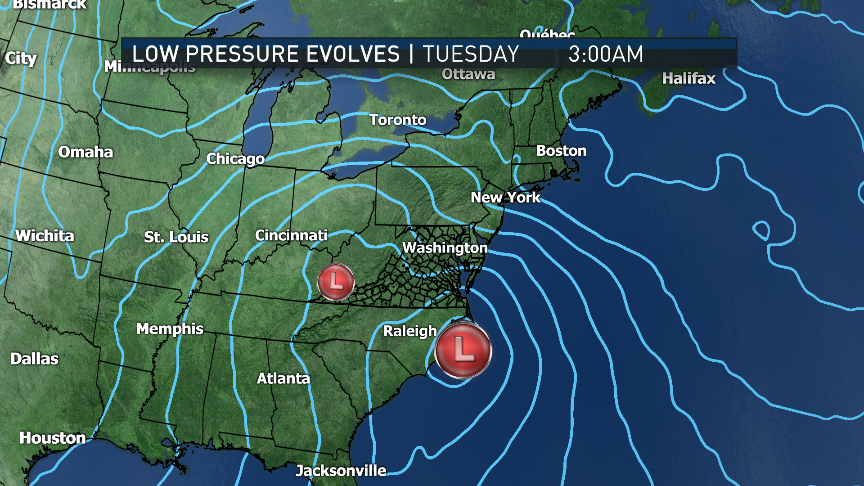
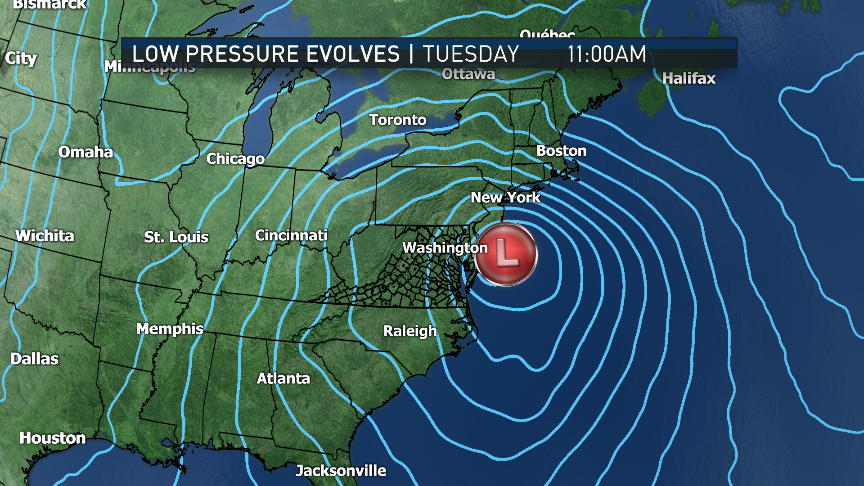
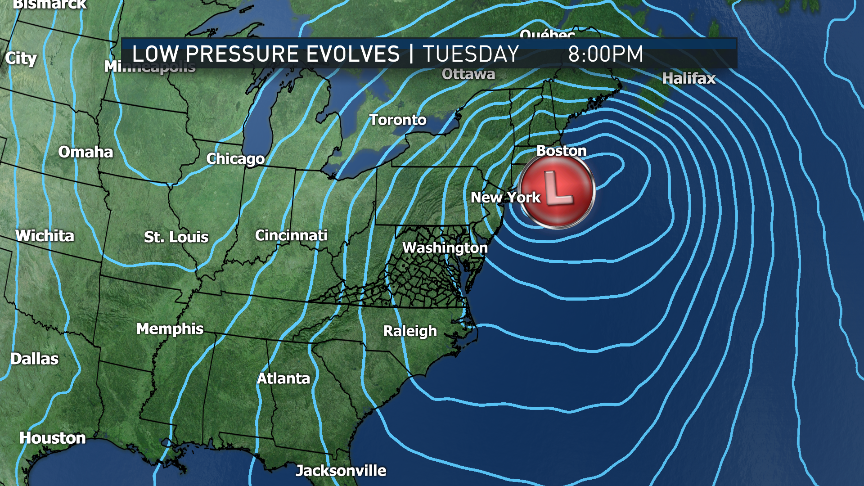
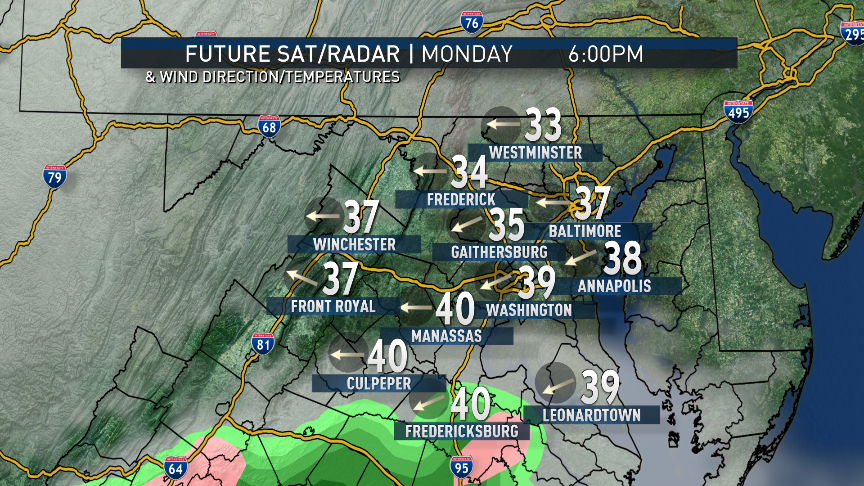
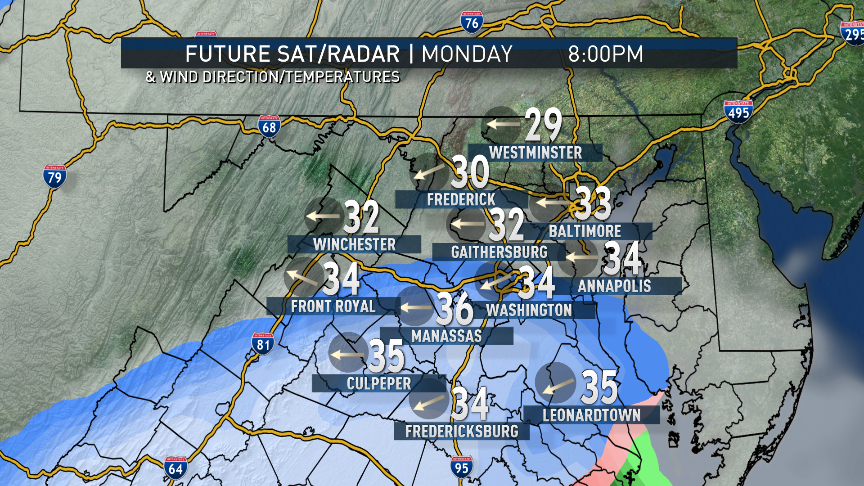
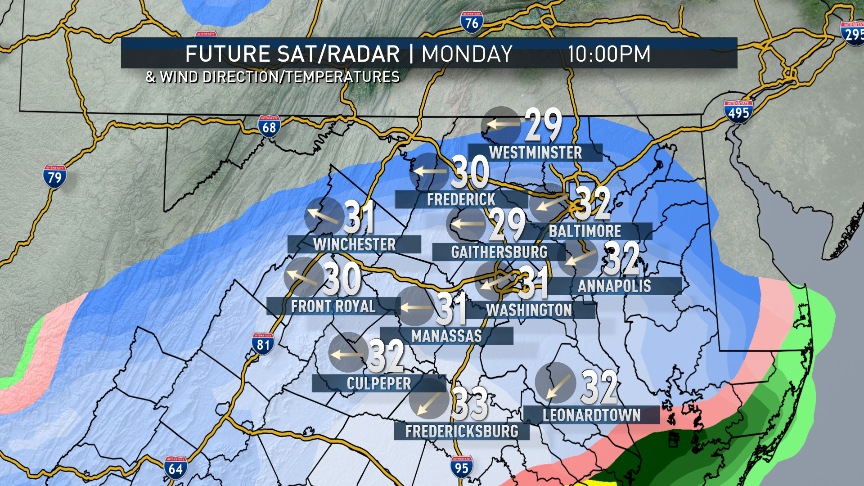
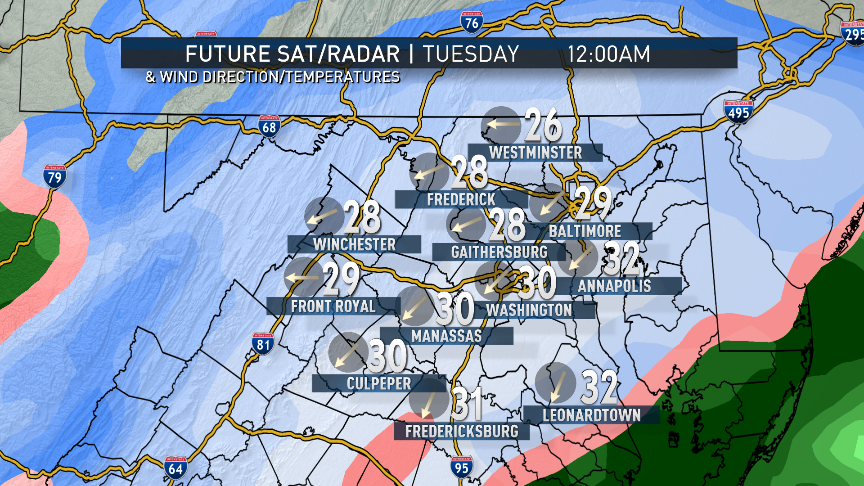
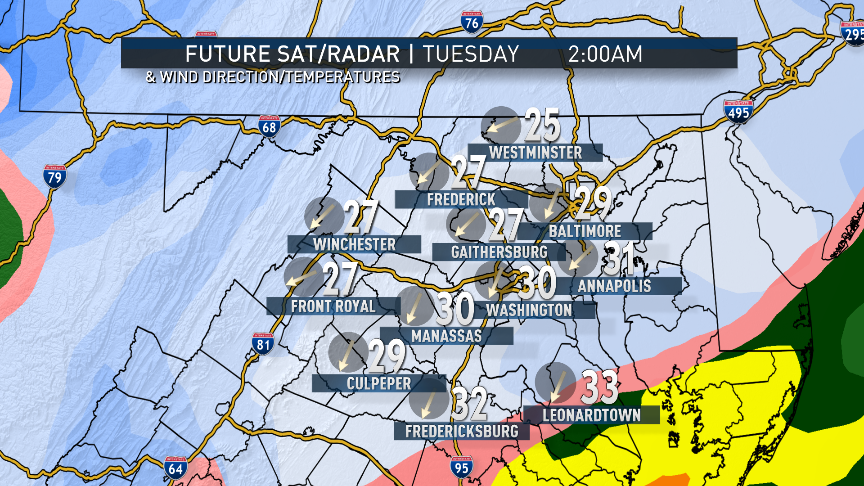
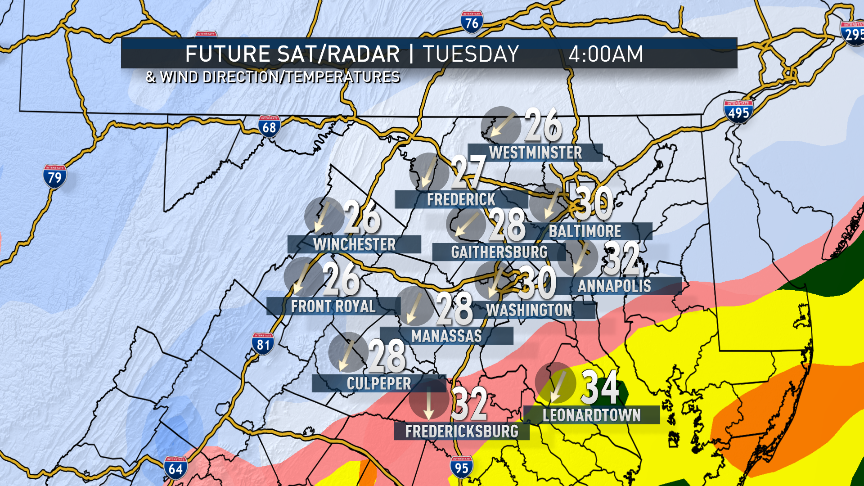
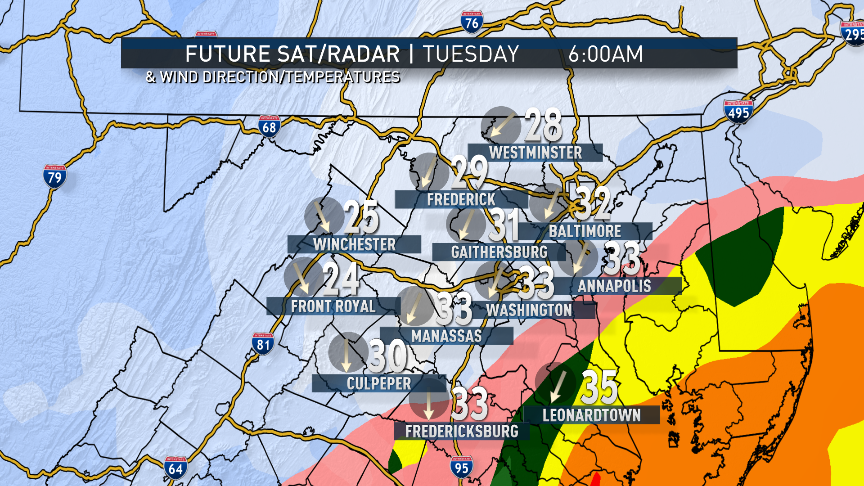
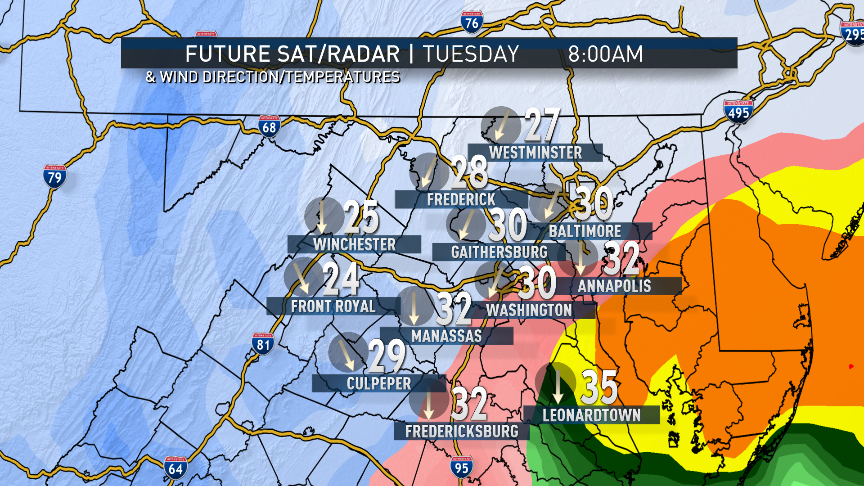
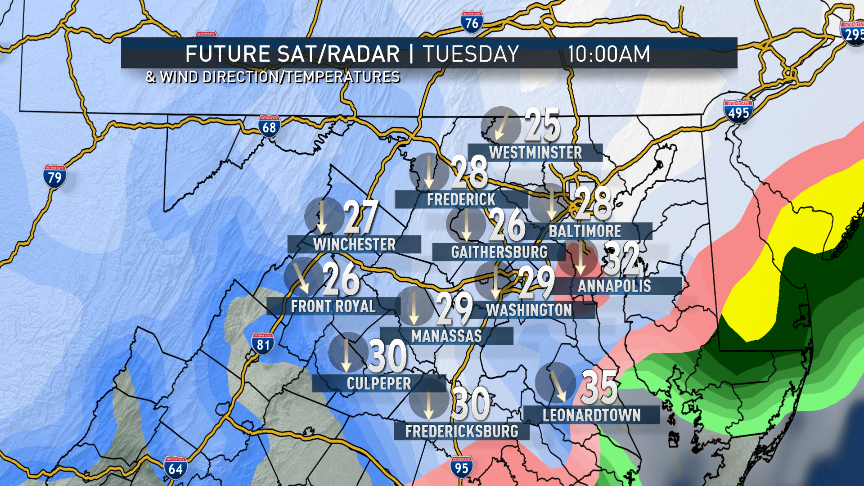
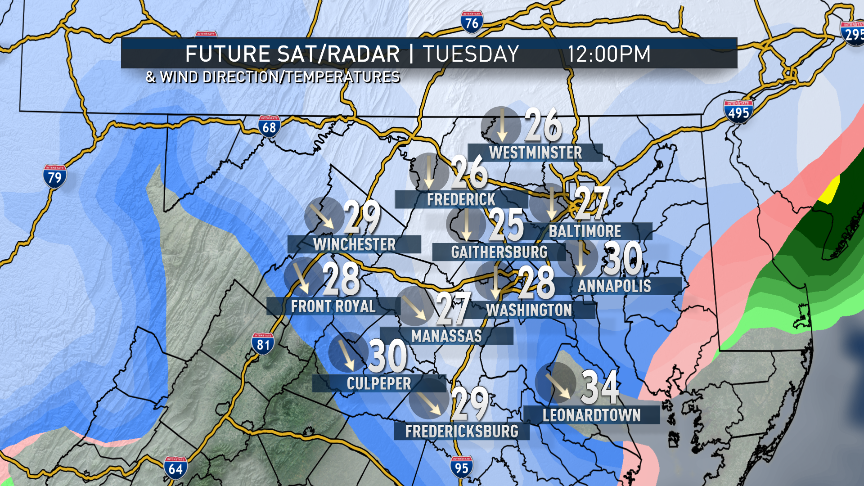
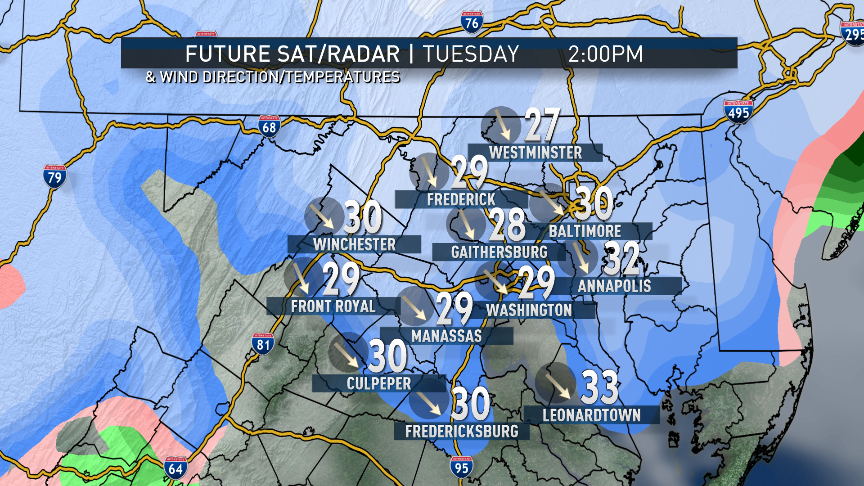
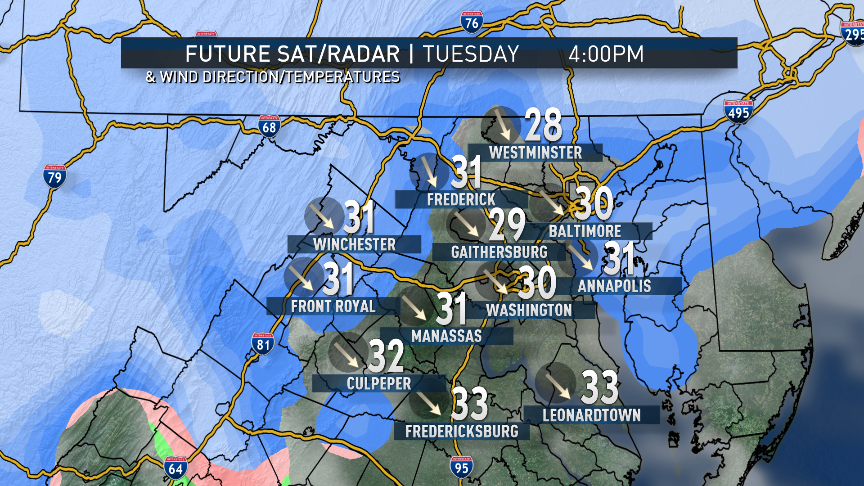
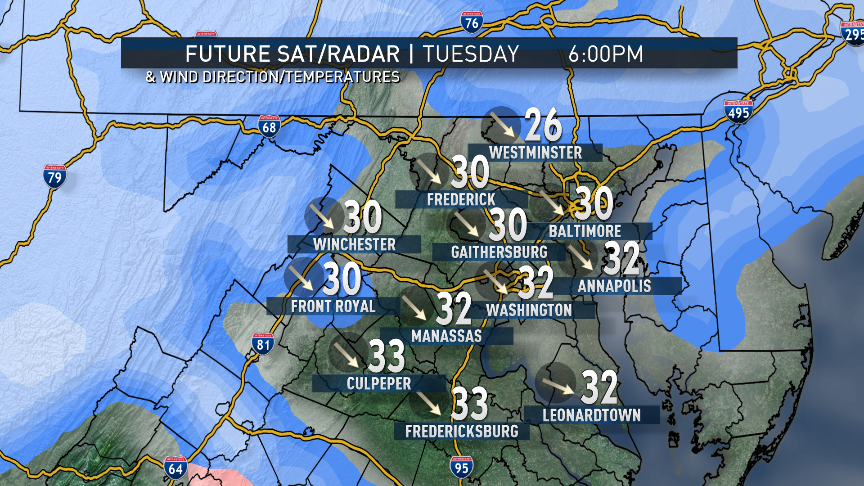
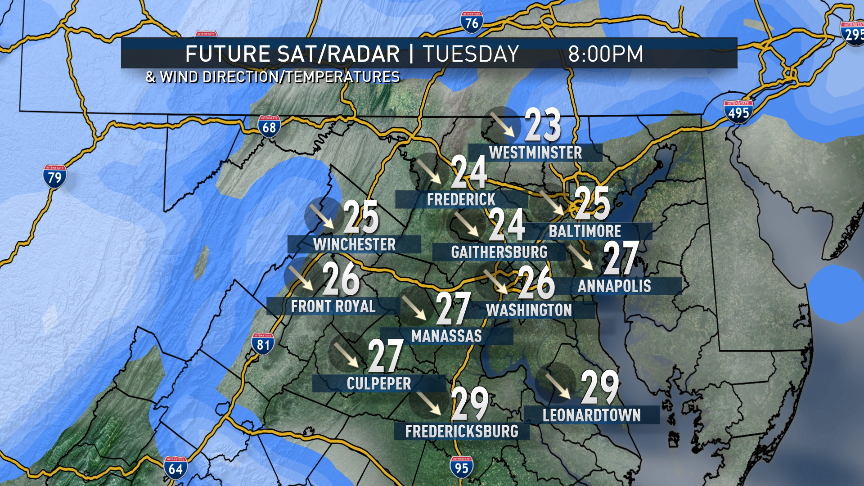
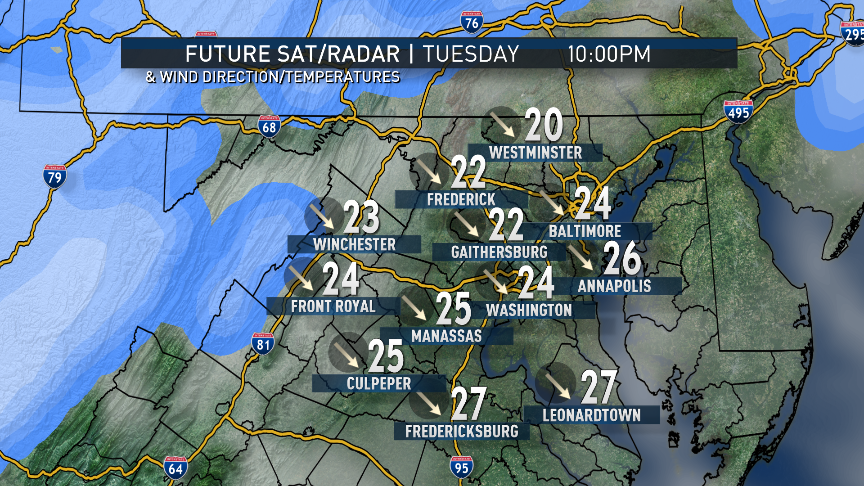
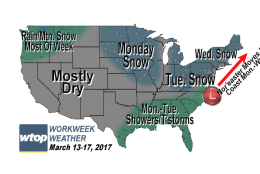
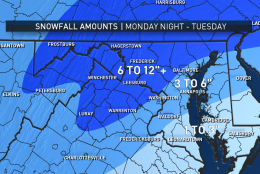
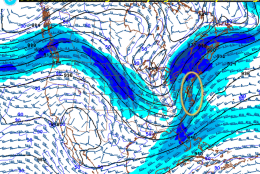
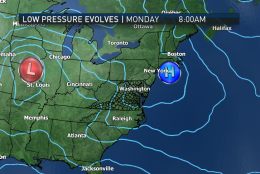
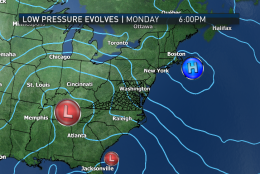
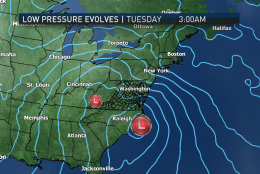
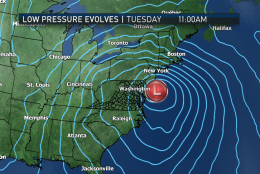
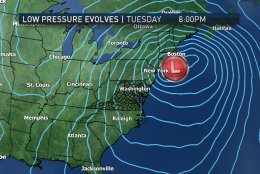
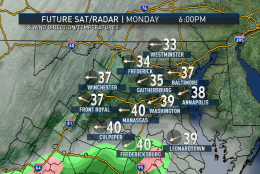
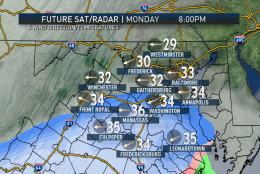
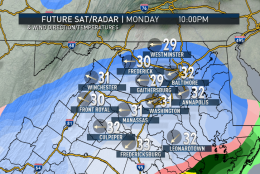
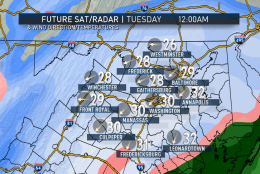
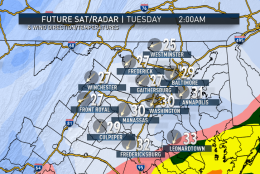
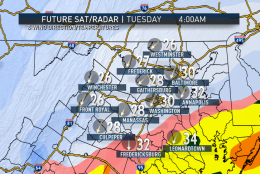
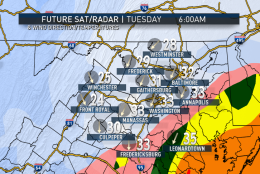
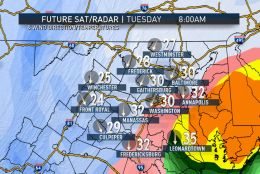
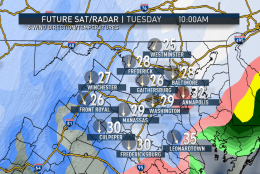
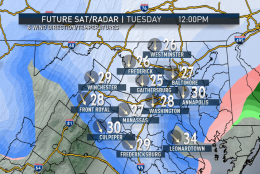
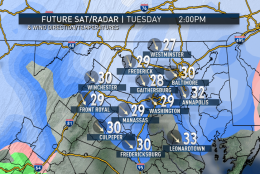
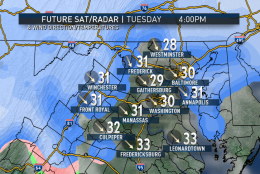
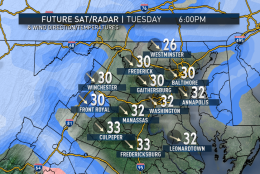
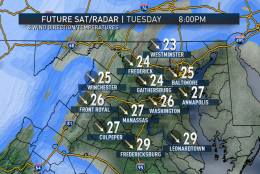
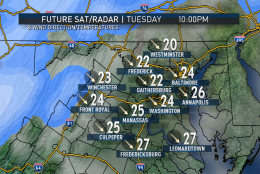
Only snow showers will be left here Tuesday afternoon and evening, but some blowing and drifting could occur. The strength of the storm also indicates that southeast of D.C., the rain/snow line as well as some sleet will be in play, cutting down amounts. But they will still benefit from the heavy rain. When it’s all over, the entire area will have received on the order of the equivalent of 1-2 inches of rainfall.
So except for the aftermath on Wednesday, there are no large scale significant weather events heading for our area the rest of the week.
Find the latest about the nor’easter on the NBC Washington weather page.
Daily weather highlights
MONDAY
• Cold start
• Some sun early, then clouding over
• “Warmest” day of the week — still below average
• Snow arrives just after the evening rush, heavy at times overnight
TUESDAY
• Heaviest of the snow ending in the morning, lighter snow on and off through afternoon and evening
• Southeast of D.C.: Wintry mix comes in
• Becoming windy, blustery and cold
• Some blowing and drifting, especially in mountains, away from the mixed precipitation influence
WEDNESDAY
• Hard freeze of all slush in the morning
• Very windy, blustery and cold
• Scattered flurries
• Mostly cloudy skies
• Highs close to freezing
THURSDAY
• Another hard refreeze of all slush and snowmelt in the morning
• Not as windy
• Temperatures still well below average, very chilly
FRIDAY
• Lots of sunshine
• Back to near 40; lots of snowmelt
Editor’s Note: The WTOP Workweek Weather Blog is intended as an in-depth yet plain language summary of the business week’s weather potential in the D.C. area along with an explanation of the contingencies and uncertainties that exist at the time of publication. For the latest actual Storm Team 4 forecast, check out the main WTOP Weather Page.



